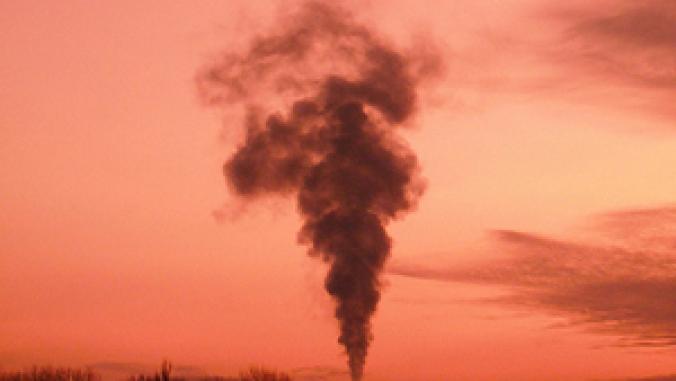US Unveils First Emission and Fuel Standards for Trucks, Buses
<p>The Obama administration today took the wraps off its proposed national standards to reduce greenhouse gas emissions and improve fuel efficiency for heavy duty trucks and buses -- the first measures for such vehicles in the U.S.</p>

The Obama administration today took the wraps off its proposed national standards to reduce greenhouse gas emissions and improve fuel efficiency for heavy duty trucks and buses -- the first measures for such vehicles in the U.S.
The proposed standards call for cuts in carbon dioxide emissions and fuel consumption for three categories of heavy trucks starting in the 2014 model year model year and running through the 2018 model year, when emissions and fuel consumption reductions are to range from 10 to 20 percent depending on the truck category and the type of fuel consumed.
U.S. Transportation Secretary Ray LaHood and U.S. Environmental Protection Agency Administrator Lisa P. Jackson introduced the proposed standards, which are subject to a 60-day public comment period, in a news conference.
The EPA and the Department of Transportation's National Highway Traffic Safety Administration estimate that implementation of the standards will reduce GHG emissions by 250 million metric tons and save 500 million barrels of oil over the lives of the vehicles produced during the first five years of the program --i.e. model years 2014 through 2018 inclusive.
The federal agencies also estimate that the program will provide $41 billion in net benefits over the lifetime of vehicles manufactured for model years 2014 to 2018. The savings were projected against potential fuel efficiency gains of 7 to 20 percent. For example, Jackson said, the operator of a semi truck could pay for technology upgrades costing $5,900 in under a year as a result of the payback created by fuel savings -- and save as much as $74,000 over the vehicle's useful life.
The proposed standards for the three types of heavy trucks -- combination tractors, heavy-duty pickups and vans, and vocational vehicles -- were devised to target challenges that manufacturers face in each category, Jackson said.
The proposed measures for:
- Combination tractors involve engine and vehicle standards that call for the vehicles to achieve up to a 20 percent reduction in carbon dioxide (CO2) emissions and fuel consumption by the 2018 model year.
- Heavy-duty pickup trucks and vans involve different standards for trucks using gasoline and diesel fuel. Gas-powered vehicles are to achieve up to a 10 percent reduction in fuel consumption and diesel vehicles, a 15 percent reduction, by model year 2018. Gasoline vehicle also are to achieve a 12 percent reduction in GHG emissions, and diesel vehicles at 17 percent reduction, by model year 2018.
- Vocational vehicles -- which include garbage, utility, delivery, dump, cement and tow trucks; transit, shuttle and school buses; emergency vehicles and more -- involve engine and vehicle standards. Vocational vehicles are to achieve up to a 10 percent reduction in fuel consumption and CO2 emissions by 2018 model year.
"This is a win-win-win for the environment, businesses and the American consumer," LaHood said of the proposed standards, adding that they help reduce the country's dependence on oil, increase climate security and improve air quality.
During a question-and-answer period, Jackson said the proposed standards set performance targets but do not dictate the measures for manufacturer to use in achieving the marks.
"This is not a one-size-fits-all solution," said Jackson. Manufacturers may choose to improve engines, idling, aerodynamics, tire performance, transmission; opt for after-treatment improvements; ramp up weight reduction or pursue other measures to meet the standards, she said, noting that the technology already exists to make such changes.
LaHood said his department and the EPA also received input from manufacturers, and the level of cooperation from the industry was similar to that between the DOT and the EPA. "It was total collaboration and total discussion," LaHood said. "Everybody had their opportunity to weigh in and have their say."
The feedback process continues with the public comment period, Jackson added. The proposal and information about how to submit comments are available at http://www.epa.gov/otaq/climate/regulations.htm and http://www.nhtsa.gov/fuel-economy.
With the proposed standards, "the Obama administration is positioning the United States to develop and deploy a new generation of cleaner trucks that will reduce our dependence on oil, strengthen the American auto and truck manufacturing sectors, create quality jobs and significantly reduce greenhouse gas pollution," said BlueGreen Alliance Executive Director David Foster in a statement released this afternoon.
The BlueGreen Alliance and coalition partners that included the Teamsters, United Auto Workers, Sierra Club, Natural Resources Defense Council, Union of Concerned Scientists, and National Wildlife Federation "sent principles to the Obama Administration to inform" the standard-setting process earlier this month, Foster's statement said.
"Reducing freight pollution and increasing fuel efficiency are critical in moving America to a clean energy economy," Foster said. "Long-haul trucks have averaged only 6 miles to the gallon since the 1970s. Though they represent only 4 percent of vehicles on the road, these vehicles -- which include delivery trucks, buses, and long-haul freight trucks -- consume as much as 37 billion gallons of fuel every year and emit 20 percent of transportation greenhouse gas pollution."
The American Council for an Energy-Efficient Economy acknowledged the proposed standards as a milestone, but said the measures could have gone further to cut fuel consumption.
"Setting fuel efficiency standards for trucks is a crucial step toward saving oil and reducing emissions from the transportation sector," said Therese Langer, the director of ACEEE's Transportation Program, "and it will help keep down the price of goods that move by truck." But, she added, "the proposal misses some important opportunities to save fuel, [and] the program needs to do more to draw advanced technologies into the market."
Large pickups to big rigs -- the vehicles covered by the proposed standards -- consume about 2.5 million barrels of oil per day, about a fifth of the total transportation oil used in the U.S., the ACEEE statement said. The organization pointed to a National Academy of Sciences study this year that said long-haul tractor-trailers, the biggest diesel users, could reduce fuel consumption by at least 35 percent by 2017 by using measures that would pay for themselves in two years. In contrast, the ACEEE said the proposed standards top out at 20 percent mandated savings.
The standards also could require more of vocational vehicles and have them serves as models for advanced efficiency technology. "U.S. companies are leaders in advanced truck and engine technologies," Langer's statement said. "A strengthened final rule can help them consolidate that advantage and lead in the global market."
The Obama administration's work to curb vehicle emissions began soon after the chief executive took office. The first opportunity came with a request from California Governor Arnold Schwarzenegger, who asked that the EPA reconsider the Golden State's request for a Clean Air Act waiver, which would enable California and more than a dozen other states to enforce tougher laws to reduce auto emissions.
Earlier this year, the administration introduced emissions standards for cars and light vans that are expected to cut carbon emissions from new vehicles by 30 percent by 2016. Then in August, the EPA and DOT sent their draft for the proposed standards that were released today to the White House Office of Management and Budget (OMB) for review.
Image CC licensed by Flickr user dok1.




